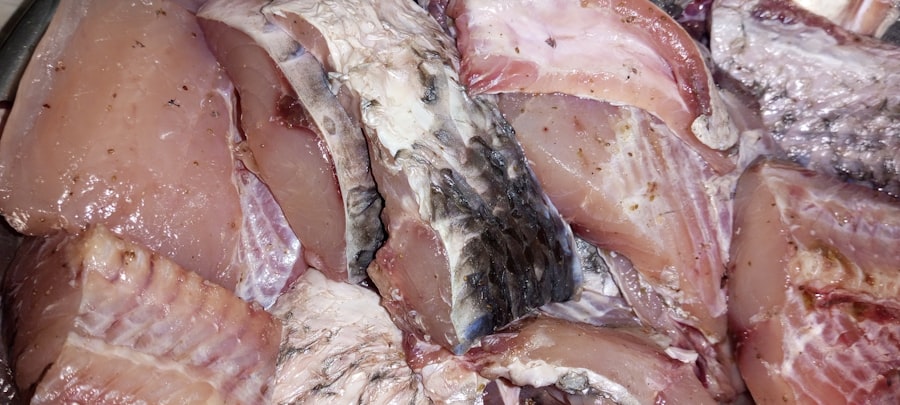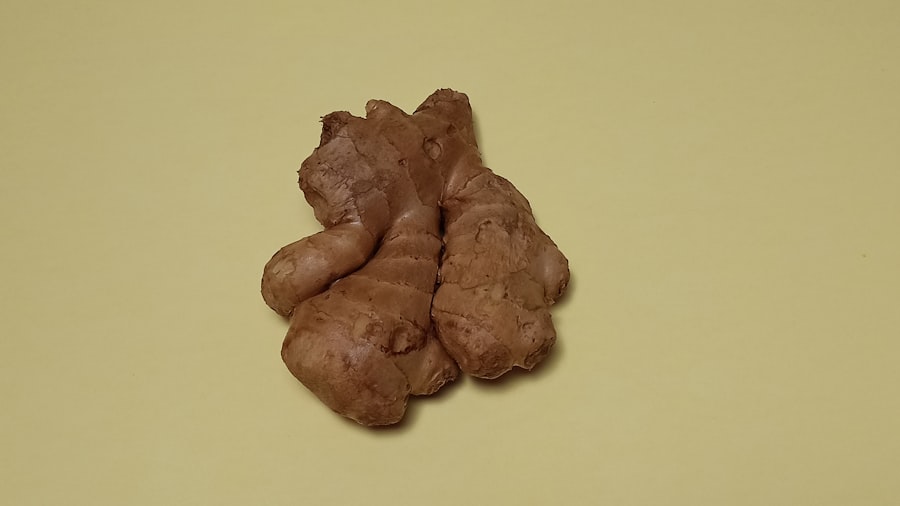Fatty liver disease, also known as hepatic steatosis, is a condition characterized by the accumulation of excess fat in liver cells. This condition can be benign in its early stages, but if left unchecked, it can lead to more serious liver problems. Understanding fatty liver is crucial, as it affects a significant portion of the population worldwide.
You may be surprised to learn that it can occur in individuals who consume little to no alcohol, leading to the classification of non-alcoholic fatty liver disease (NAFLD). This condition has become increasingly prevalent in recent years, often linked to rising obesity rates and sedentary lifestyles. The liver plays a vital role in your body, processing nutrients, filtering toxins, and producing bile for digestion.
When fat accumulates in the liver, it can disrupt these essential functions. You might not experience any symptoms initially, which is why many people remain unaware of their condition until it progresses. As awareness grows about fatty liver disease, it becomes increasingly important for you to understand its causes, risk factors, and potential complications.
By doing so, you can take proactive steps to protect your liver health.
Key Takeaways
- Fatty liver is a condition where fat accumulates in the liver, leading to inflammation and potential liver damage.
- Causes of fatty liver include excessive alcohol consumption and non-alcoholic fatty liver disease (NAFLD), which is linked to obesity and insulin resistance.
- Risk factors for fatty liver include obesity, type 2 diabetes, high cholesterol, and metabolic syndrome.
- Symptoms of fatty liver may include fatigue, weakness, and abdominal pain, but many people with the condition have no symptoms.
- Complications of fatty liver can include liver scarring (cirrhosis) and liver failure, as well as an increased risk of cardiovascular disease.
Causes of Fatty Liver
The causes of fatty liver are multifaceted and can vary from person to person. One of the primary contributors is an imbalance between the amount of fat being produced in the liver and the amount being removed. This imbalance can stem from various factors, including poor dietary choices and metabolic disorders.
For instance, consuming a diet high in refined carbohydrates and sugars can lead to increased fat production in the liver. If you find yourself indulging in sugary beverages or processed foods regularly, you may be unknowingly increasing your risk of developing fatty liver. Another significant cause of fatty liver is insulin resistance, a condition where your body’s cells become less responsive to insulin.
This can lead to elevated blood sugar levels and increased fat storage in the liver. If you have conditions such as type 2 diabetes or metabolic syndrome, you may be at a higher risk for developing fatty liver disease. Additionally, certain medications and rapid weight loss can also contribute to fat accumulation in the liver.
Understanding these causes can empower you to make informed choices about your health and lifestyle.
Risk Factors for Fatty Liver

Several risk factors can increase your likelihood of developing fatty liver disease. One of the most significant is obesity. If you are overweight or obese, particularly with excess abdominal fat, your chances of developing fatty liver are considerably higher.
This is due to the fact that excess body fat can lead to insulin resistance and increased fat deposition in the liver. You may want to assess your body weight and consider making changes if you fall into this category. Age is another important risk factor; as you get older, your risk of developing fatty liver increases.
Additionally, certain medical conditions such as high cholesterol, hypertension, and polycystic ovary syndrome (PCOS) can also elevate your risk. If you have a family history of liver disease or metabolic disorders, you should be particularly vigilant about monitoring your liver health. By recognizing these risk factors, you can take proactive steps to mitigate your chances of developing fatty liver disease.
Symptoms of Fatty Liver
| Symptom | Description |
|---|---|
| Fatigue | Feeling tired and weak |
| Weight loss | Unintentional weight loss |
| Abdominal pain | Pain or discomfort in the upper right abdomen |
| Jaundice | Yellowing of the skin and eyes |
| Swelling in the abdomen | Enlarged liver or spleen |
In its early stages, fatty liver disease often presents no noticeable symptoms, which can make it challenging for you to recognize its presence. However, as the condition progresses, you may begin to experience a range of symptoms that could indicate a problem with your liver. Common symptoms include fatigue, weakness, and discomfort in the upper right abdomen.
You might also notice unexplained weight loss or a general feeling of malaise. If you find yourself experiencing these symptoms consistently, it may be time to consult a healthcare professional. As fatty liver disease advances, more severe symptoms may emerge.
You could experience jaundice, which is characterized by yellowing of the skin and eyes due to elevated bilirubin levels. Swelling in the abdomen or legs may also occur as fluid accumulates in these areas. If you notice any of these symptoms, it’s crucial to seek medical attention promptly.
Early detection and intervention can significantly improve your prognosis and help prevent further complications.
Complications of Fatty Liver
If left untreated, fatty liver disease can lead to serious complications that may jeopardize your overall health. One of the most concerning outcomes is the progression to non-alcoholic steatohepatitis (NASH), a more severe form of fatty liver characterized by inflammation and liver cell damage. NASH can eventually lead to fibrosis or scarring of the liver tissue, which may progress to cirrhosis—a life-threatening condition where the liver becomes severely damaged and unable to function properly.
In addition to cirrhosis, individuals with fatty liver disease are at an increased risk for developing liver cancer. The chronic inflammation associated with NASH can create an environment conducive to cancerous changes in liver cells. Furthermore, fatty liver disease has been linked to an increased risk of cardiovascular diseases such as heart attack and stroke.
Understanding these potential complications underscores the importance of early detection and management of fatty liver disease.
Diagnosis of Fatty Liver

Diagnosing fatty liver disease typically involves a combination of medical history assessment, physical examination, and imaging tests. Your healthcare provider will likely begin by asking about your symptoms, lifestyle habits, and any underlying medical conditions that may contribute to fat accumulation in the liver. A physical examination may reveal signs such as an enlarged liver or abdominal tenderness.
Imaging tests such as ultrasound, CT scans, or MRI are commonly used to visualize the liver and assess fat content. These non-invasive tests can help confirm the presence of fatty liver disease without requiring invasive procedures like a biopsy. In some cases, a biopsy may be necessary to determine the extent of liver damage or inflammation if there are concerns about NASH or other complications.
By understanding the diagnostic process, you can better prepare for discussions with your healthcare provider regarding your liver health.
Treatment Options for Fatty Liver
Treatment options for fatty liver disease primarily focus on addressing the underlying causes and managing associated conditions. Since there are no specific medications approved solely for treating fatty liver disease, lifestyle modifications play a crucial role in managing this condition. Your healthcare provider may recommend weight loss if you are overweight or obese; even a modest reduction in body weight can significantly improve liver health.
In addition to weight loss, managing blood sugar levels and cholesterol through diet and exercise is essential for improving fatty liver outcomes. Regular physical activity can help reduce fat accumulation in the liver while also promoting overall health. If you have underlying conditions such as diabetes or high cholesterol, your healthcare provider may prescribe medications to help manage these issues effectively.
Lifestyle Changes for Managing Fatty Liver
Making lifestyle changes is one of the most effective ways to manage fatty liver disease and improve your overall health. One key change involves adopting a balanced diet rich in whole foods while minimizing processed foods high in sugars and unhealthy fats. Incorporating more fruits, vegetables, whole grains, lean proteins, and healthy fats into your meals can support liver function and promote weight loss.
Regular physical activity is equally important for managing fatty liver disease. Aim for at least 150 minutes of moderate-intensity exercise each week; this could include activities like brisk walking, cycling, or swimming. Exercise not only helps with weight management but also improves insulin sensitivity and reduces fat accumulation in the liver.
By committing to these lifestyle changes, you can take control of your health and work towards reversing fatty liver disease.
Medications for Fatty Liver
While there are currently no specific medications approved solely for treating fatty liver disease, certain medications may be prescribed to address underlying conditions that contribute to fat accumulation in the liver.
Additionally, some studies have explored the use of vitamin E and pioglitazone as potential treatments for non-alcoholic steatohepatitis (NASH).
However, these treatments are not universally recommended and should only be considered under the guidance of a healthcare professional. It’s essential to have open discussions with your provider about any medications you may be taking or considering while managing fatty liver disease.
Diet and Nutrition for Fatty Liver
Diet plays a pivotal role in managing fatty liver disease effectively. You should focus on consuming a well-balanced diet that emphasizes whole foods while avoiding processed foods high in sugars and unhealthy fats. Incorporating plenty of fruits and vegetables into your meals provides essential vitamins and antioxidants that support overall health and help combat inflammation.
Healthy fats are also crucial for maintaining optimal liver function; consider incorporating sources such as avocados, nuts, seeds, and olive oil into your diet. Additionally, lean proteins like fish and poultry can provide necessary nutrients without contributing excess fat to your diet. Staying hydrated by drinking plenty of water is equally important; it aids digestion and helps flush toxins from your body.
Prevention of Fatty Liver
Preventing fatty liver disease involves adopting healthy lifestyle habits that promote overall well-being. Maintaining a healthy weight through regular exercise and balanced nutrition is one of the most effective strategies for reducing your risk of developing this condition. If you are currently overweight or obese, even modest weight loss can significantly lower your chances of developing fatty liver.
Additionally, limiting alcohol consumption is essential for protecting your liver health; excessive alcohol intake can exacerbate fat accumulation in the liver and lead to more severe complications. Regular check-ups with your healthcare provider can help monitor your liver health and identify any potential issues early on. By taking proactive steps towards prevention, you can safeguard your health and reduce your risk of developing fatty liver disease in the future.
In conclusion, understanding fatty liver disease is vital for maintaining optimal health and preventing serious complications down the line. By recognizing its causes, risk factors, symptoms, and treatment options, you empower yourself to take control of your health journey. Embracing lifestyle changes such as improved diet and regular exercise will not only benefit your liver but also enhance your overall quality of life.
Fatty liver disease is a growing concern, particularly among older adults, as it can lead to more severe liver conditions if not managed properly. For those interested in learning more about this condition and its implications for senior health, a related article can be found on the Explore Senior Health website. This resource provides valuable insights into the causes, symptoms, and management strategies for fatty liver disease. To read more about this topic, you can visit the article by clicking on this link: Explore Senior Health – Fatty Liver Disease.
FAQs
What is fatty liver?
Fatty liver, also known as hepatic steatosis, is a condition where there is an abnormal accumulation of fat in the liver cells.
What causes fatty liver?
Fatty liver can be caused by excessive alcohol consumption (alcoholic fatty liver disease) or by non-alcoholic factors such as obesity, high cholesterol, type 2 diabetes, and rapid weight loss.
What are the symptoms of fatty liver?
Fatty liver may not cause any symptoms in the early stages. However, as the condition progresses, symptoms such as fatigue, weakness, weight loss, abdominal pain, and jaundice may occur.
How is fatty liver diagnosed?
Fatty liver is often diagnosed through blood tests, imaging studies such as ultrasound or MRI, and sometimes a liver biopsy may be performed to confirm the diagnosis.
Can fatty liver be reversed?
In many cases, fatty liver can be reversed through lifestyle changes such as weight loss, a healthy diet, regular exercise, and avoiding alcohol. However, if left untreated, it can progress to more serious liver conditions such as cirrhosis.
What are the complications of fatty liver?
Complications of fatty liver can include liver inflammation (steatohepatitis), liver fibrosis, cirrhosis, and an increased risk of liver cancer. It can also lead to complications such as liver failure and the need for a liver transplant.
